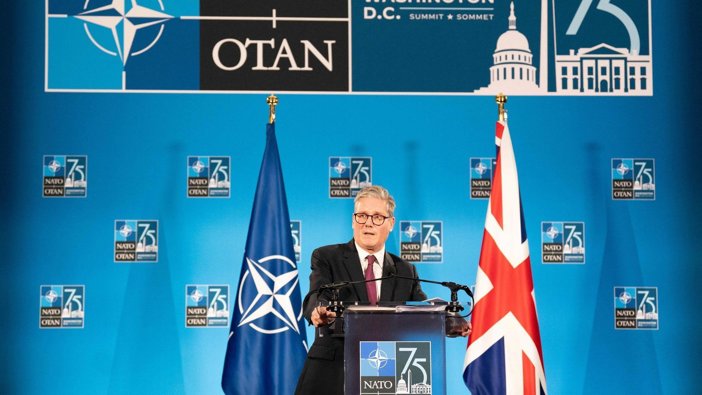
UK Launches NATO-Focused Defense Overhaul
UK commits $20B to nuclear deterrence and NATO-first defense overhaul amid Trump and Putin challenges.
UK Pledges Billions to Nuclear Program, Submarine Fleet
The United Kingdom on Monday unveiled a comprehensive new defense strategy in response to evolving global threats, particularly from Russian President Vladimir Putin and the shifting military posture of the United States under President Donald Trump. The announcement marked a major policy shift designed to enhance NATO readiness and reduce reliance on U.S. support in Europe.
British Prime Minister Keir Starmer said his government would bring the country to “war-fighting readiness,” committing more than $20 billion to its nuclear deterrence program and ramping up investments in weapons manufacturing, artificial intelligence, and advanced technologies. The strategic overhaul follows a defense review initiated shortly after Starmer took office last summer.
According to the newly released 144-page defense plan, threats to national security are now “more serious and less predictable than at any time since the Cold War.” Starmer emphasized that protecting the UK requires more than funding. “We also need to see the biggest shift in mindset in my lifetime: to put security and defense front and center—to make it the fundamental organizing principle of government,” he said.
The largest single investment will go toward expanding the UK’s nuclear warhead program, with nearly $20.3 billion allocated to bolster deterrence capabilities. The plan includes the construction of up to 12 nuclear-powered attack submarines, to be produced under the AUKUS trilateral security pact between Australia, the UK, and the U.S., with a new vessel planned every 18 months. This initiative aims to maintain security in the Indo-Pacific and counter rising aggression from China.
Addressing NATO Concerns and US Commitment
The UK’s strategy is framed as a “NATO first” doctrine, prioritizing European defense while acknowledging a need to prepare for potential changes in American military engagement abroad. Though Trump encouraged increased NATO spending during his first term, only a minority of member nations met their commitments until Russia’s invasion of Ukraine in 2022. Currently, five nations, including the U.S., exceed the 3% GDP spending threshold, while eight remain below the 2% minimum target.
In light of ongoing threats and shifting alliances, Starmer’s administration has committed to raising defense spending to 2.5% of GDP by 2027, with a goal of reaching 3% by 2030. President Trump, however, has urged NATO members to target 5% of GDP, a benchmark not currently met by any alliance member, including the U.S.
Defense Secretary John Healey stated, “We are in a new era of threat, which demands a new era for UK defense.” European security analysts warn that Russian aggression will likely persist beyond the Ukraine conflict, suggesting a long-term need for enhanced readiness regardless of changes in leadership in Moscow or Washington.
The UK’s proactive posture signals its intent to take on greater leadership within NATO, amid growing concern over U.S. reliability in future conflicts. As part of this effort, the government will also focus on societal resilience and internal support mechanisms to strengthen national cohesion against foreign threats.
The defense overhaul represents one of the largest strategic pivots in decades, reinforcing the UK’s commitment to collective European security and laying the groundwork for an era of intensified global competition and deterrence.






